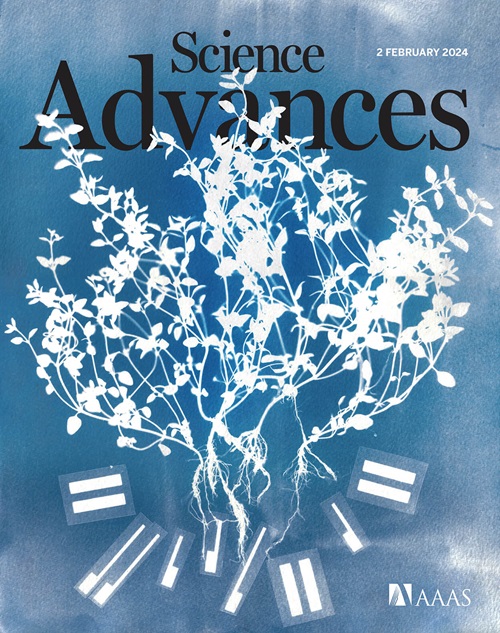A spatially organized Cd24a+/Pax9+ stem cell core governs postnatal tooth establishment
IF 11.7
1区 综合性期刊
Q1 MULTIDISCIPLINARY SCIENCES
引用次数: 0
Abstract
Mineralized tissues are fundamental in mechanical support and protection in vertebrates. Their formation by progenitor cells during development remains elusive. Here, we show that the postnatal establishment of the molar teeth was governed by a spatially organized core of Cd24a+/Pax9+ progenitors that persisted into adulthood. Cd24a+ cells gave rise to the dentin-pulp complex, while Pax9+ ones mainly generated periodontal tissues. During development, guided by alveolar bone–derived PDGFB (platelet-derived growth factor, B polypeptide), Cd24a+/Pax9+ cells gradually concentrated on the apical region during the crown-to-root transition, collectively migrated and formed dental root. Cell ablation and conditional Wnt knockout notably compromised tooth establishment. Single-cell RNA sequencing, CUT&Tag, and spatial mapping further revealed distinct features of Cd24a+/Pax9+ cells and their cellular organization. Last, the CD24+/PAX9+ core was also present in human teeth, suggesting it as a conserved developmental program. Together, our work underscores the role of spatially organized dental stem cells in the postnatal establishment of a model mineralized organ in mammals.
一个空间组织的Cd24a+/Pax9+干细胞核心控制着出生后牙齿的形成
矿化组织是脊椎动物机械支持和保护的基础。它们在发育过程中由祖细胞形成仍然是难以捉摸的。在这里,我们表明,出生后的磨牙建立是由Cd24a+/Pax9+祖细胞的空间组织核心控制的,这些核心持续到成年。Cd24a+细胞生成牙本质-牙髓复合体,Pax9+细胞主要生成牙周组织。在发育过程中,在牙槽骨源性PDGFB(血小板衍生生长因子,B多肽)的引导下,Cd24a+/Pax9+细胞在冠向根过渡过程中逐渐向根尖区域集中,集体迁移形成牙根。细胞消融和条件Wnt敲除明显损害了牙齿的形成。单细胞RNA测序、CUT&;Tag和空间定位进一步揭示了Cd24a+/Pax9+细胞及其细胞组织的独特特征。最后,CD24+/PAX9+核心也存在于人类牙齿中,这表明它是一个保守的发育程序。总之,我们的工作强调了空间组织的牙干细胞在哺乳动物出生后建立模型矿化器官中的作用。
本文章由计算机程序翻译,如有差异,请以英文原文为准。
求助全文
约1分钟内获得全文
求助全文
来源期刊

Science Advances
综合性期刊-综合性期刊
CiteScore
21.40
自引率
1.50%
发文量
1937
审稿时长
29 weeks
期刊介绍:
Science Advances, an open-access journal by AAAS, publishes impactful research in diverse scientific areas. It aims for fair, fast, and expert peer review, providing freely accessible research to readers. Led by distinguished scientists, the journal supports AAAS's mission by extending Science magazine's capacity to identify and promote significant advances. Evolving digital publishing technologies play a crucial role in advancing AAAS's global mission for science communication and benefitting humankind.
 求助内容:
求助内容: 应助结果提醒方式:
应助结果提醒方式:


